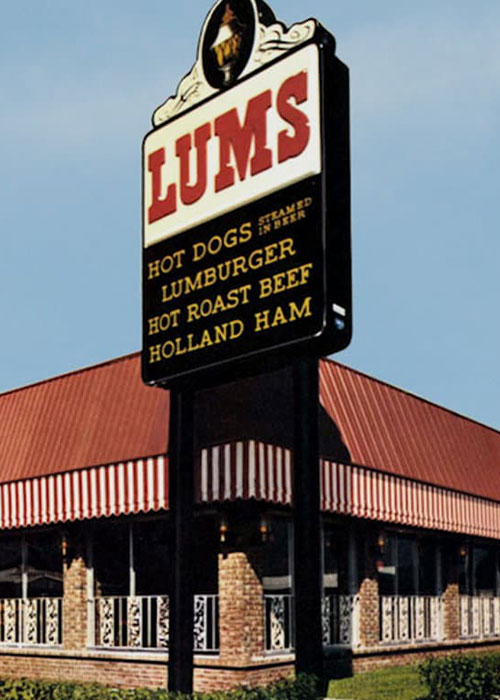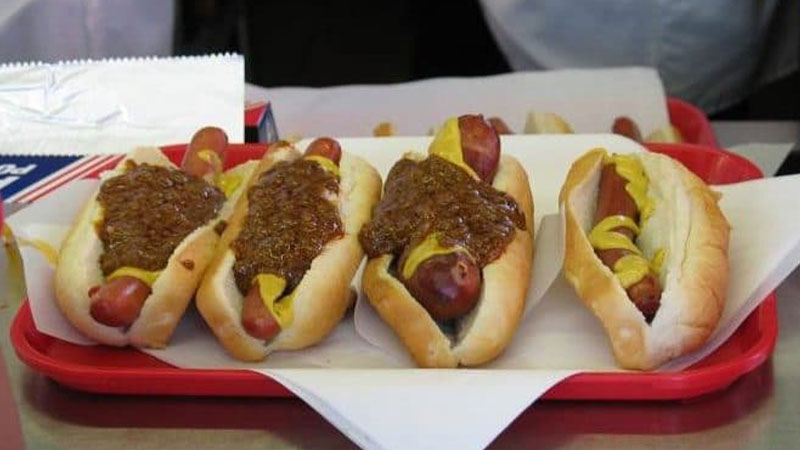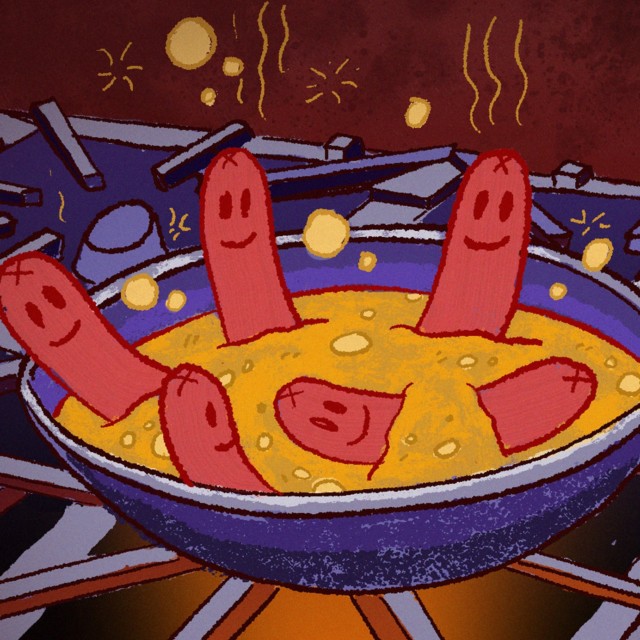I grew up in Wisconsin, where bratwurst cooked in beer were a commonplace. You could get them anywhere. Restaurants served them; people made them at home. Hot dogs bathed in beer were less popular. (In a place where you can easily score a bratwurst, why would you settle for a hot dog?) But, as the movie “The Irishman” proved when it was released, beer-cooked hot dogs loomed large for many people in the rest of the United States.
A 25-second scene in that Martin Scorsese film shows Robert DeNiro as Frank Sheeran, the Irish gangster of the title, picking up some dogs in Miami at a place called Lum’s. “There ain’t a better hot dog in America,” the character declares in a voiceover.
Lum’s, now defunct, was a restaurant chain born in Miami Beach in 1955, when Stuart and Clifford Perlman, two brothers from Philadelphia, bought a small diner on 41st Street from a Massachusetts native named Barnett Carvin, who founded the restaurant in 1950. The 16-seat joint’s calling card was hot dogs steamed in beer and the Perlmans kept it on the menu. (Where Carvin got the idea to cook hot dogs in beer, and why the place was called Lum’s, has been lost to time.) Though the Perlmans had other business concerns, they actually worked the place a lot of the time.

The Perlmans were not the first people to cook hot dogs in beer. Given Germany’s long histories with both sausage and suds, the practice is almost certain to have been a regular one in that country long before Lum’s came along. And as early as 1949, the Cedar Lake Resort in Sheboygan, Wis., was regularly advertising its “specialty” of beer-steamed hot dogs.
But it was Lum’s that ran with the idea. The year after buying the diner, the enterprising Perlmans had opened a second branch. By 1961, there were four Lum’s in Florida and the company had gone public. Eventually, Lum’s would boast more than 400 locations, including shops in Puerto Rico, the Bahamas, Spain, and West Germany. In some socially conservative states, there were local battles over whether to issue Lum’s a liquor license, without which they could not make their signature product.
By the 1970s, beer-steamed hot dogs were everywhere from Maine to California, and not always made by Lum’s. A Fort Lauderdale restaurant called Brownie’s even had the temerity to advertise its “famous beer-steamed hot dogs” on Lum’s home turf.
You can’t buy a Lum’s dog today. The chain changed hands several times starting in the 1960s and went steadily downhill. The original location closed in 1983. The final Lum’s, in Nebraska, steamed its final frankfurter in 2017. So, if you want the Lum’s experience, you have to make a hot dog at home. A number of recipes purporting to be the Lum’s original have popped up on the internet in recent years and they are similar enough to each other to smack of truth.
Lum’s hot dogs were not steamed solely in beer, but a sort of a beer broth, composed of one part beer, two parts water, one teaspoon each of sugar, garlic powder, and caraway seeds, and a quarter of an onion chopped fine. This is brought to a boil. The wieners are then simmered in the liquid for 15 minutes.
Details on the two primary ingredients in the Lum’s formula — the dogs and the beer — are frustratingly few. I could find no account of what brand of hot dog Lum’s used, only that it was a quarter-pound specimen. It’s hard to find a dog that size in the markets these days, so go as big as you can, or just use your favorite brand. As to the beer, Budweiser was specified in a 2005 article in the Miami Herald. It’s not a very imaginative choice, but it makes sense, since Bud was and still is cheap, and is available nationwide.
“The Irishman”’s brief scene depicts the grill man dosing the hot dogs with beer as they simmer on the grill. This does seem to have been the way Lum’s did it, first steaming the sausages in the beer broth and then briefly grilling them.
One thing no article I have uncovered discusses was the custom condiment Lum’s put on its hot dogs: sauerkraut spiked with sherry. The topping is even mentioned prominently on old Lum’s menus. That means Lum’s hot dogs actually received two doses of liquor! No wonder they had a devoted fan base.
There is no recipe for this “sherry-flavored sauerkraut,” as Lum’s called it. So I simply heated up some sauerkraut in a quarter cup of dry sherry. (Don’t use the sweet stuff.) I recommend going this extra mile. The dog by itself tasted good, but with the sauerkraut — which you had to pay extra for at Lum’s — it was great and truly unique in flavor.
The Perlman brothers, it turned out, were not particularly interested in giving the world an excellent hot dog. They were businessmen and Lum’s was just one of their ventures.
In 1969, Stuart and Clifford Perlman got into the gaming industry, buying Caesars Palace in Las Vegas for $58 million. (That’s a lot of hot dog sales!) They sold off Lum’s the same year. The Perlmans’ holdings eventually included Caesars Tahoe, Caesars Boardwalk Regency in Atlantic City, plus resorts in the Poconos and other interests. But they were stopped cold when they applied for a permanent gaming license in New Jersey. The New Jersey Casino Control Commission turned them away “because of alleged ties to unsavory characters,” according to the Miami Herald.
Maybe the connection between the hoods in “The Irishman” and Lum’s wasn’t all that far-fetched after all.
Lum’s Beer-Steamed Hot Dogs

Ingredients
- 1 can Budweiser
- 2 cans water
- 1 teaspoon sugar
- 1 teaspoon garlic powder
- 1 teaspoon caraway seeds
- ¼ onion, chopped
- Hot dogs
- Additional beer for grilling
- 1 cup sauerkraut
- ¼ cup dry sherry
Method
- Empty beer can into a medium-sized pot. Refill the can with water twice and add to the pot. Add sugar, garlic powder, caraway seeds, and onion. Bring to a boil. Add however many hot dogs you plan to make. Reduce heat and simmer for 15 minutes.
- While waiting for hot dogs to cook, sauté sauerkraut in sherry until sherry is absorbed. Keep sauerkraut warm.
- When hot dogs are almost done steaming, heat a pan until hot. Remove hot dogs from the pot and immediately place them in the pan. Pour some beer over the hot dogs in a pan and quickly grill them for a minute.
- Put each hot dog in a bun and top with sauerkraut. Add mustard if desired.
